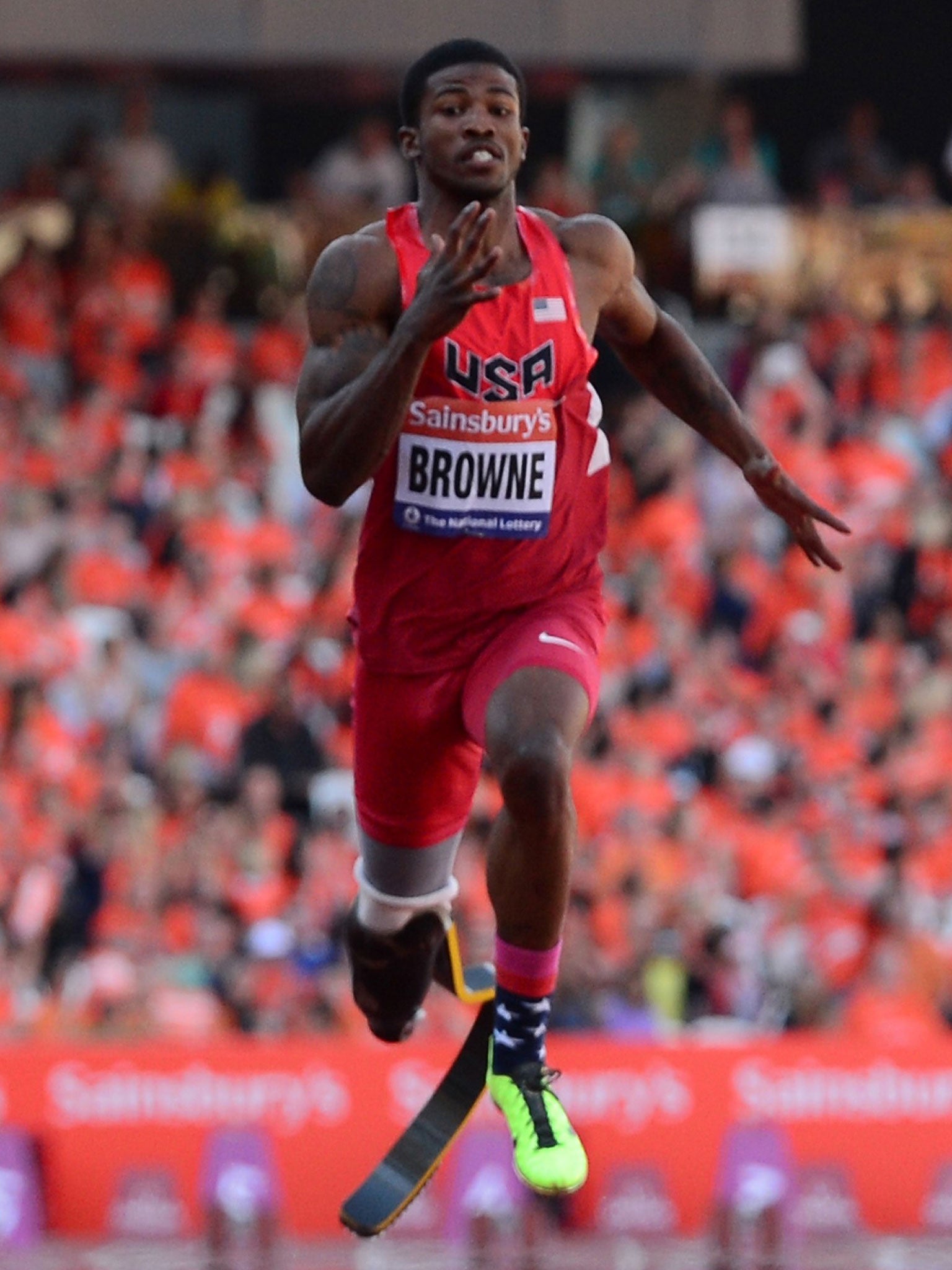In 2016 will the blade runners be racing Usain Bolt?
After fastest Para 100m ever on Sunday, some think so – but their slow start is a major obstacle

Meet Earl. Earl is Richard Browne’s racing leg, the blade that he straps into the place of his right leg, amputated after it was shredded when he fell through a window back home in Mississippi. Together Earl and Browne have been a causing a stir.
In the Olympic Stadium on Sunday Browne, Alan Oliveira and Jonnie Peacock produced the fastest Para 100-metre race in history. Oliveira, a double amputee, and Browne each set a new world record in their category, respectively the T43 and T44 class. Peacock, third home, ran faster than ever – five of the nine-strong field ran their best-ever times. The blade runners are getting quicker... and fast.
Having run the race, Browne, with Earl still in place, talked the talk. He was excited, still a little breathless as he stood in the tunnel. How fast can you guys run, he was asked, sub-10 seconds? “Definitely,” he responded. It is Browne’s belief that by Rio 2016 blade runners will be on the Olympic start line alongside Usain Bolt and Co.
Peacock ran 10.90sec to win Paralympic gold a year ago. Earlier last summer he set a new world record, clocking 10.85sec. At last week’s World Championships Browne ran 10.83sec. Last month Oliveira lowered the T43 mark to 10.77sec in Berlin – the two categories are raced together at most major meets but have different records.
On Sunday Oliveira stopped the clock at 10.57sec, Browne at 10.75 and Peacock at 10.84. A year ago in the 100m final, Oliveira came home in 11.33sec, Browne in 11.03. The progression from the 21-year-old Brazilian in particular is astonishing.
It was only Browne who made the noise afterwards. He likes to sound off – he compares his rivalry with Peacock to Muhammad Ali and Joe Frazier – and what he said was certain to do that. He believes there will “more than one” Para-athlete at the 2016 Olympics and warned the IAAF, athletics’ governing body, to “get their rules ready”.
Browne, though, may prove to be flying solo on this one. Neither Oliveira nor Peacock has any ambition to run in the next Olympics – their focus remains on the 2016 Paralympics. Oliveira will be the poster boy of the Rio Paralympics and wants the 100m/200m sprint double. After then he may look to move up to 400m and test himself against able-bodied competitors.
There is a good reason why the Briton and the Brazilian are happy breaking speed barriers in the Paralympics. Oliveira’s time on Sunday was the 762nd quickest 100m this year. The “A” standard for next month’s able-bodied World Championships in Moscow – the mark athletes have to reach to qualify – is 10.15sec and that is likely to come down by Rio. Even the “B” standard – that allows smaller nations to send a runner – is 10.21sec and in the split-second world of the 100m, the 0.36sec gap between that and Oliveira’s best is sizeable.
The issue for blade runners is the start. Theirs is too slow for the sprints as they do not get the propulsion out of the blocks. In simple terms they take precious seconds to get up to speed and get power into the blades.
“In the 100m you need to run like James Dasaolu – 6.40sec to 60m,” explained Peacock, like Browne a T44 single amputee. “Richard ran 6.99 this year and there’s a massive difference there. Going from 6.99 to 6.40 is a big ask. [He’s] got great talent but I think 10.5 would be a great time for an amputee.
“I’m not going to stand here and say: ‘I’m going to run 9.8 next season’. Because it’s not going to happen. [Browne] ran 10.7, I think we might edge towards 10.5 and maybe a sub-10.5, who knows? But from 10.8 to 10.0 is a massive ask. You can’t see an amputee running sub-10… maybe if they’re 20ft tall.”
Oscar Pistorius ran the 400m at the London Olympics, reaching the semi-finals, before Oliveira beat him for the first time ever in the Paralympic 200m. Pistorius complained bitterly afterwards about the length of Oliveira’s blades. They were legal but the IPC, Para sport’s governing body, is still debating the issue of blade length. Pistorius claimed that Oliveira’s longer blades gave him an unfair advantage as it allowed him longer strides – he actually took six fewer than Pistorius. The South African had to take to the courts to fight off similar claims as he pressed his case to run in able-bodied events. It was in 2008 that the Court of Arbitration for Sport finally overturned an IAAF ban on blades. It ruled there was no unfair advantage.
If Oliveira or Browne wanted to run in IAAF events they would have to get their own blades approved – the Pistorius ruling applied only to his – but for the moment that remains an issue for the future, and for all the speed of their progress, and Browne’s bold words, one they are unlikely to be exploring any time soon in the 100m.
Subscribe to Independent Premium to bookmark this article
Want to bookmark your favourite articles and stories to read or reference later? Start your Independent Premium subscription today.

Join our commenting forum
Join thought-provoking conversations, follow other Independent readers and see their replies